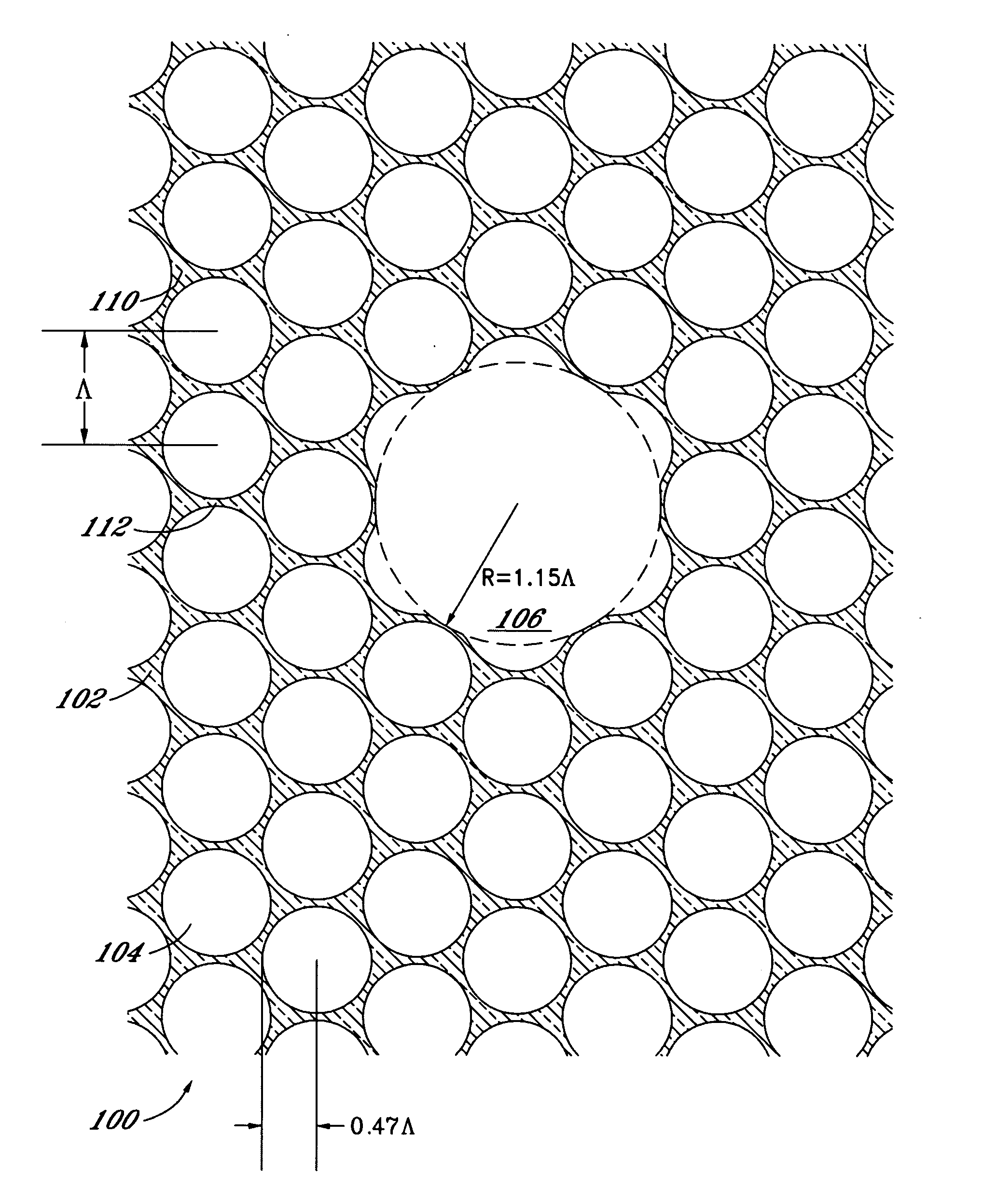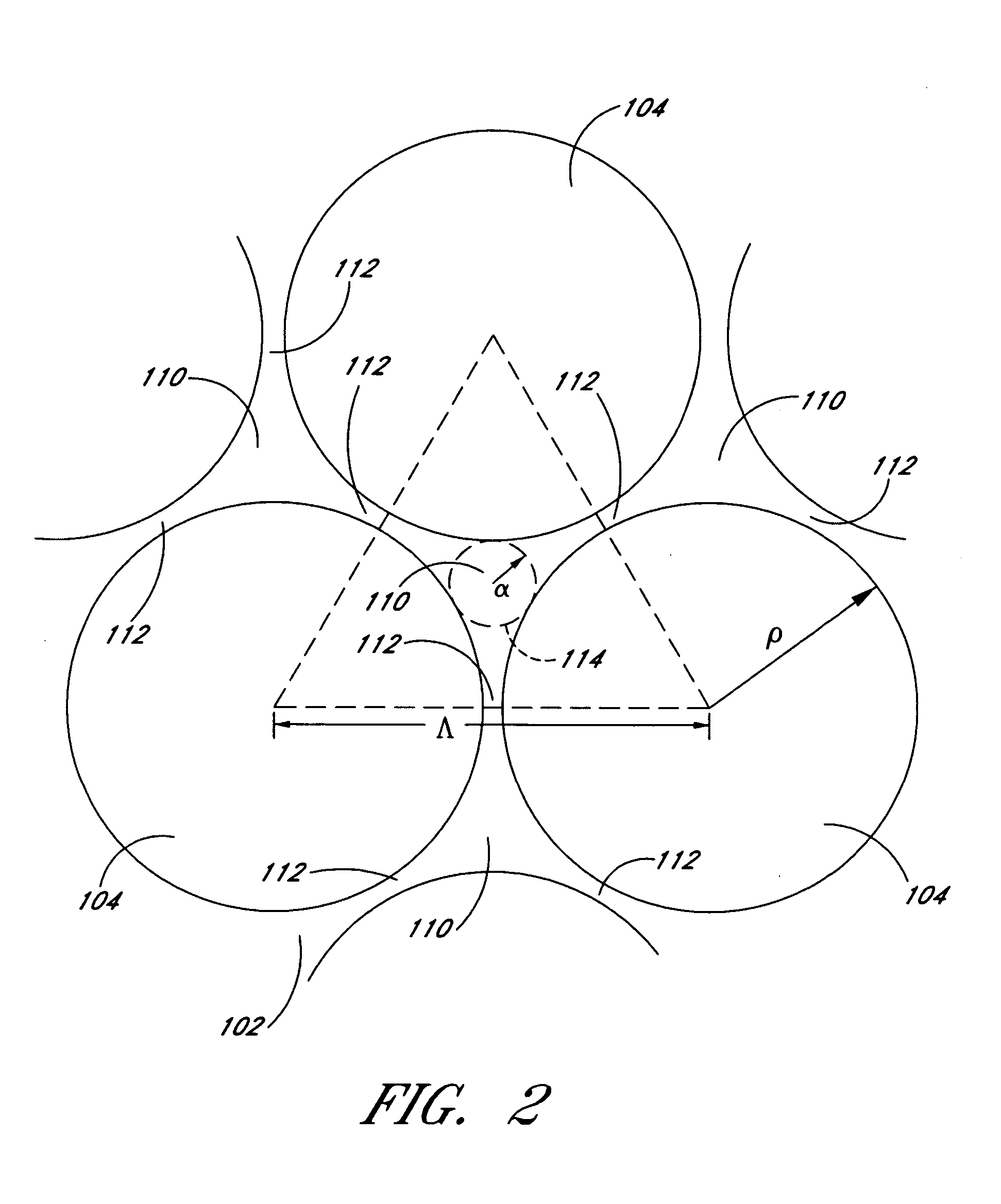Method for configuring air-core photonic-bandgap fibers free of surface modes
a technology of surface mode and photonic bandgap fiber, which is applied in the field of optical fibers for propagating light, can solve the problems of coupling being a source of propagation loss, no portion of the available spectrum is immune to this loss mechanism, and the loss can be exceedingly low, so as to achieve faster and less complicated, the effect of reducing the loss
- Summary
- Abstract
- Description
- Claims
- Application Information
AI Technical Summary
Benefits of technology
Problems solved by technology
Method used
Image
Examples
Embodiment Construction
[0040] The following description is based on a photonic band-gap fiber (PBF) with a cladding photonic crystal region comprising a triangular lattice comprising a plurality of circular holes filled with a gas (e.g., air) in silica or other solids, where the holes are spaced apart by a period Λ. Silica-based PBFs are described, for example, in R. F. Cregan et al., Single-Mode Photonic Band Gap Guidance of Light in Air, cited above; Jes Broeng et al., Analysis of air-guiding photonic bandgap fibers, cited above; and Jes Broeng et al., Photonic Crystal Fibers: A New Class of Optical Waveguides, cited above. For simplicity, such fibers are referred to herein as air-hole fibers; however, as discussed above, the following discussions and results are also applicable to photonic-bandgap fibers with a core and / or all or some of the cladding holes filled with other materials besides air (e.g., another gas, a vacuum, a liquid, or a solid) and with solid portions of the cladding made of material...
PUM
| Property | Measurement | Unit |
|---|---|---|
| wavelength | aaaaa | aaaaa |
| refractive index | aaaaa | aaaaa |
| refractive index | aaaaa | aaaaa |
Abstract
Description
Claims
Application Information
 Login to View More
Login to View More - R&D
- Intellectual Property
- Life Sciences
- Materials
- Tech Scout
- Unparalleled Data Quality
- Higher Quality Content
- 60% Fewer Hallucinations
Browse by: Latest US Patents, China's latest patents, Technical Efficacy Thesaurus, Application Domain, Technology Topic, Popular Technical Reports.
© 2025 PatSnap. All rights reserved.Legal|Privacy policy|Modern Slavery Act Transparency Statement|Sitemap|About US| Contact US: help@patsnap.com



